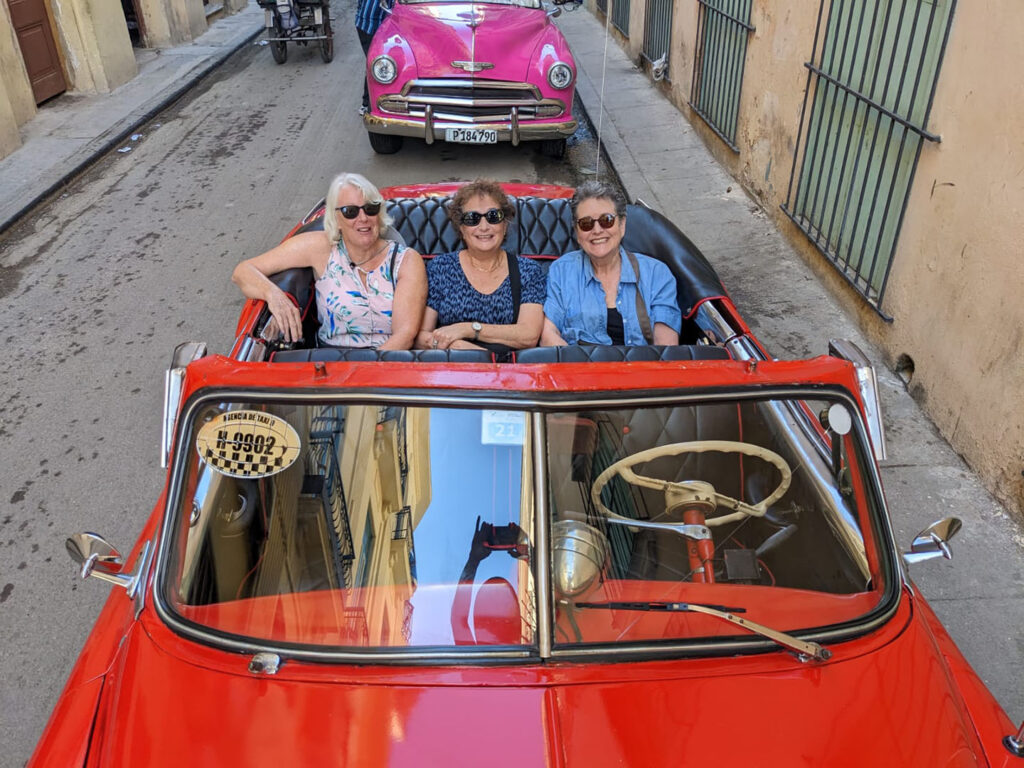
We had just lifted off from Miami International when we began our descent, or so it seemed. We were in the air about an hour—barely enough time to drink a small bottle of water. And to think that just two months earlier I had returned from India on a particularly hellish 17-hour flight (while sitting next to an active three-year-old whose father had sadly given up).
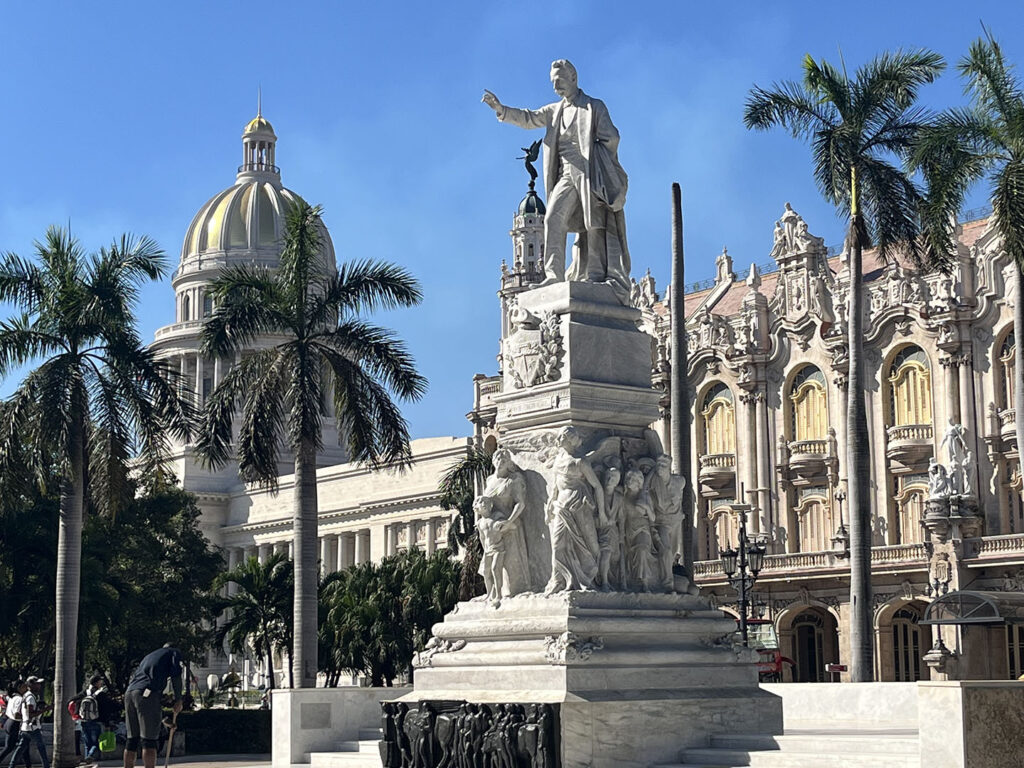
In comparison, this journey was paradise. And I was surprised to see that many airlines are now making the short hop from the United States to Cuba, including American, Southwest, Jet Blue, United, Delta, and others.
So Near, Yet So Far
But the distance in nautical miles cannot be compared to the distance from the U.S. in history or culture. Cuba is poor, and there are difficulties in finding medicine, food, and most other products. For many of the people who live in Cuba, ninety miles might as well be nine thousand.
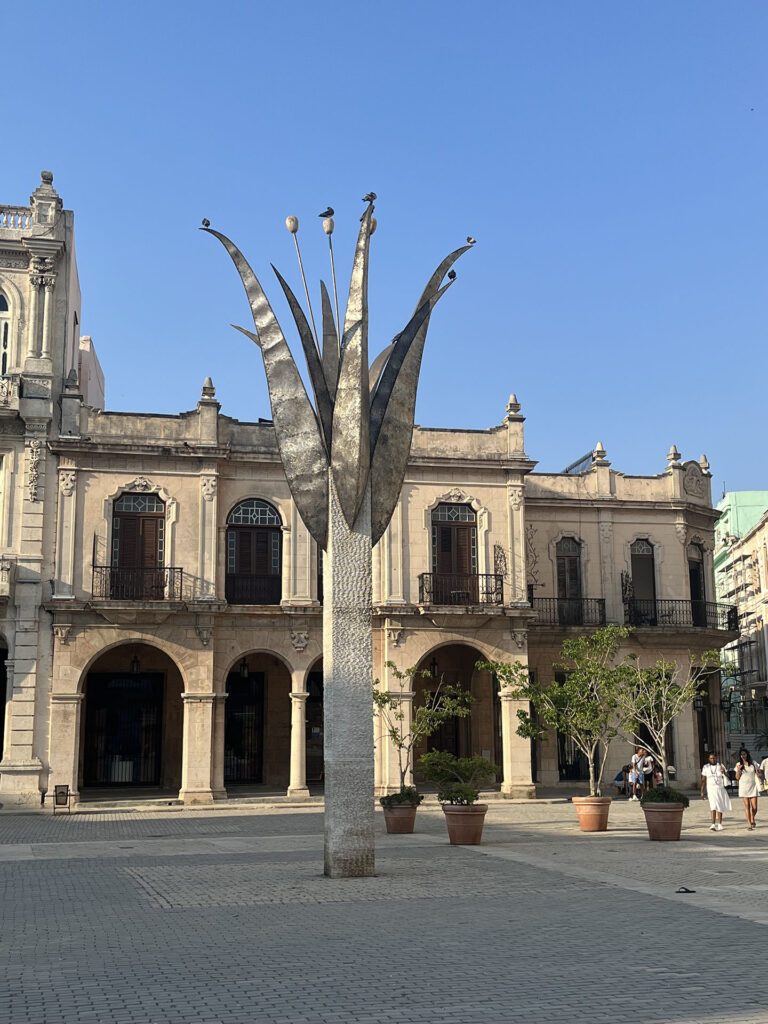
Of course, the ease of getting from Miami to Havana—with a half-filled plane and no crowds at the airport—was largely because visitors from the U.S. cannot just pop over to Cuba to loll on the beach or sit on a rooftop bar at a fancy hotel, as do many European, Canadian, and South American tourists. U.S. citizens are limited by decisions made by politicians ever since the ascent of Fidel Castro in 1959.
And, although I had traveled mostly solo over the past 50 years, I knew that I would not have been able to travel to Cuba alone—nor, at this point in my life—would I have wanted to.
I went with a small group (nine) travelers with a lovely Cuban American woman I met several years ago, Talek Nantes. Her company is called Travels with Talek, and she is a true traveler and a source of information about countries all over the world, from Spain to China and beyond.
A Tangled History
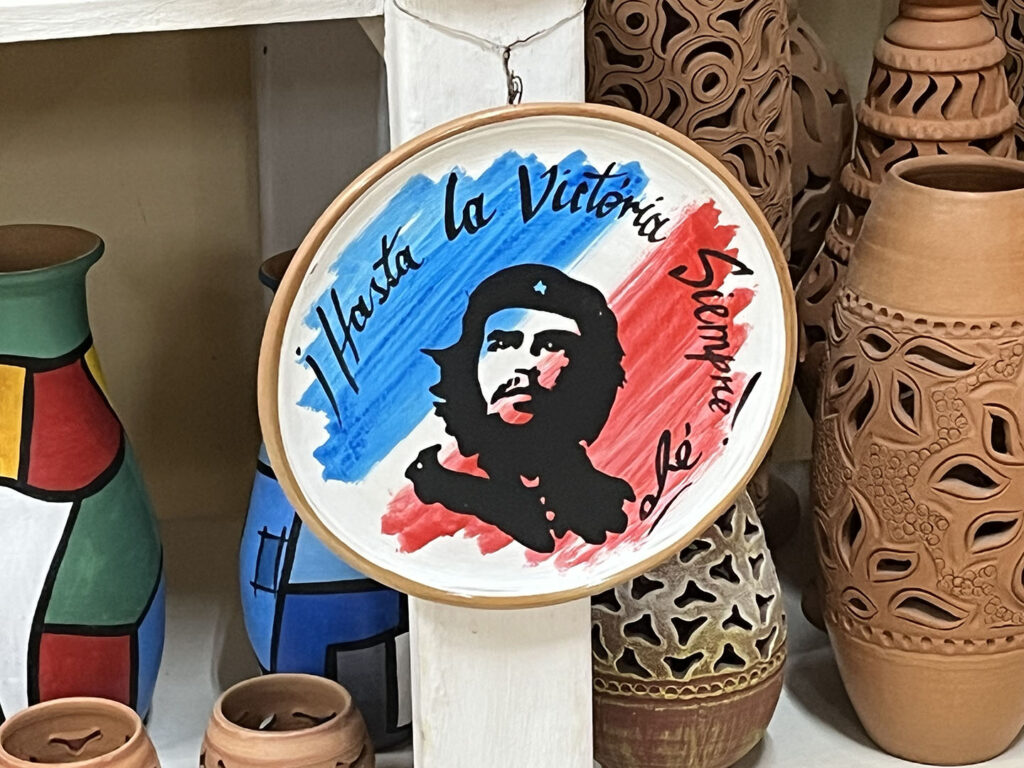
Because we had to fit within one of the 12 categories of authorized travel for Americans in Cuba, our tour meant that we would stay in casas particulares (privately-run accomodations) and eat at paladares (privately-run restaurants).
In the end, staying and eating with Cuban families was so meaningful to me and to many of the others in our group and much preferable than staying in a relatively expensive hotel.
The Spirit of Havana
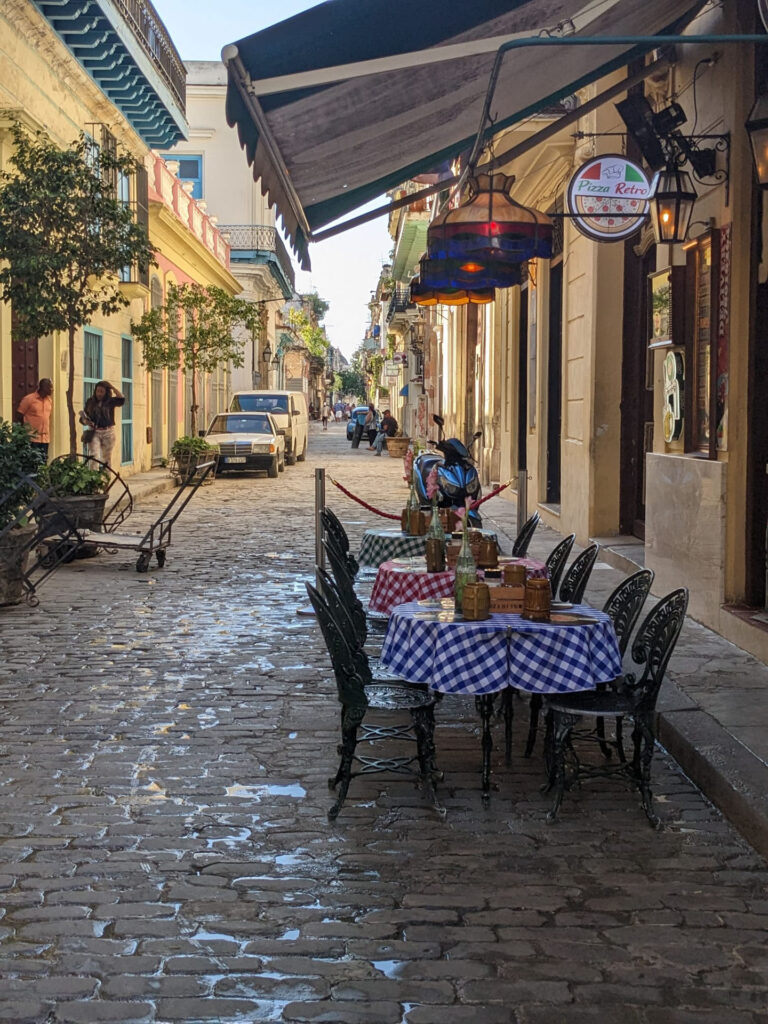
Our home base in Cuba was a casa particular on San Ignacio Street, near the Plaza Vieja, a gorgeous and stately square in Old Havana. There we ate breakfast at a charming rooftop dining area (served by a creative and kind cook), were coddled by the wonderful staff, and listened (till 3 a.m., unfortunately) to music in the streets.
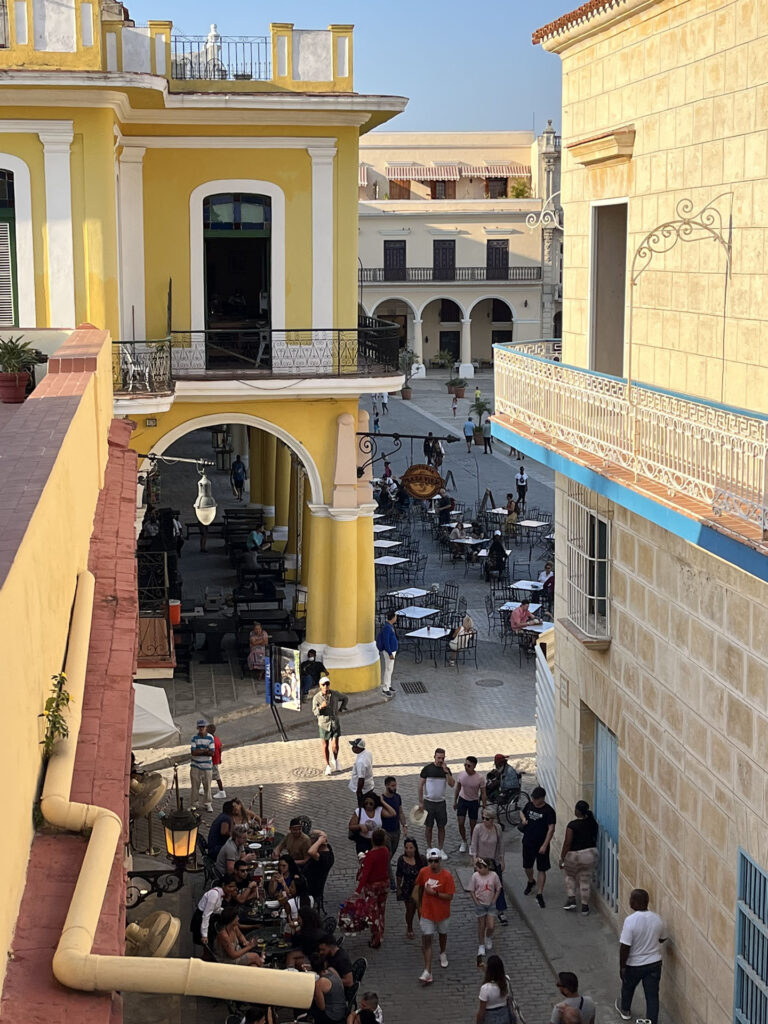
Memorable Moments in Cuba
1) We walked the streets of Havana and inspected the gorgeous old buildings, some restored to their original beauty and others in various states of decay. We also barrelled along the streets in our 1950s pink convertible, singing “YMCA” at the top of our lungs, led by our spirited driver (who was dancing and driving at the same time).

2) We danced everywhere, but especially at a performance of the Buena Vista Social Club, where we were pulled onstage and boogied to the fabulous music.
Many of us remember American musician Ry Cooder and British producer Nick Gold’s terrific film The Buena Vista Social Club (1997), which sparked a world-wide rediscovery of the venerable Cuban group.
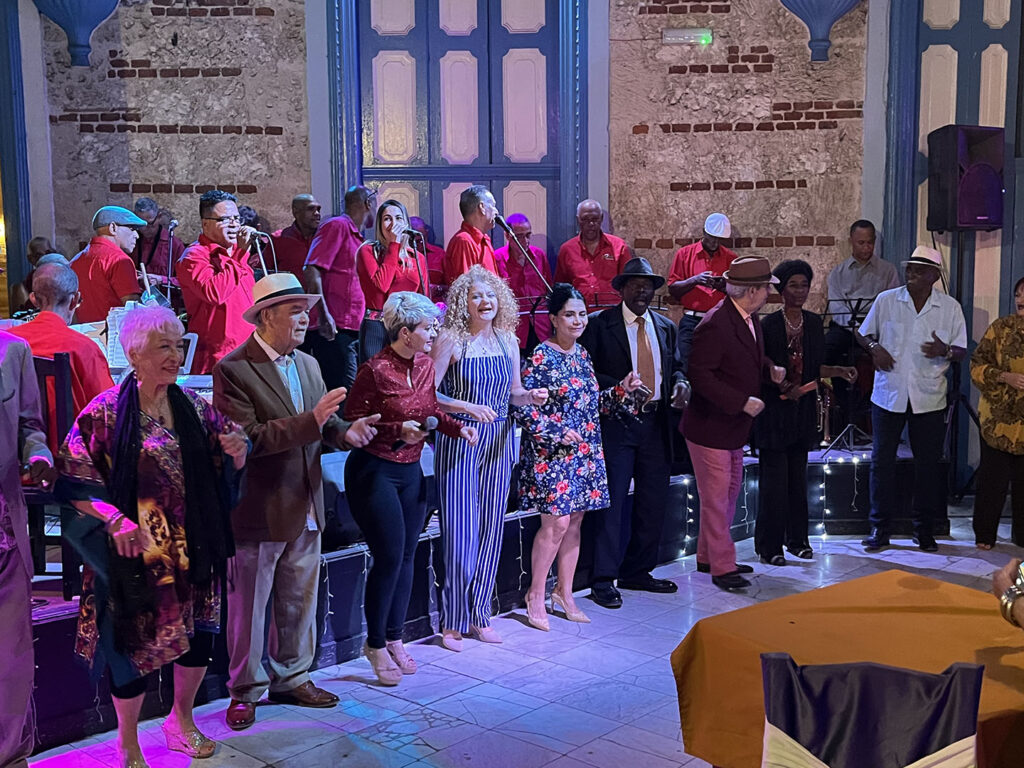
Although only a few members of the original group are alive (including the amazing Omara Portuando), a new generation of performers still inspire audiences to dance.
When I showed the video of us dancing at the club to the surgeon who replaced my knee a year ago, he was impressed (or amused). “Spicy,” he said. All of us felt that we were just that….and perhaps some of us were.
We were later instructed in Cuban dance in Trinidad—with dancers young enough to be my great-grandchildren. When I mentioned that I could have been my partner’s bisabuela (great grandmother), he just laughed.
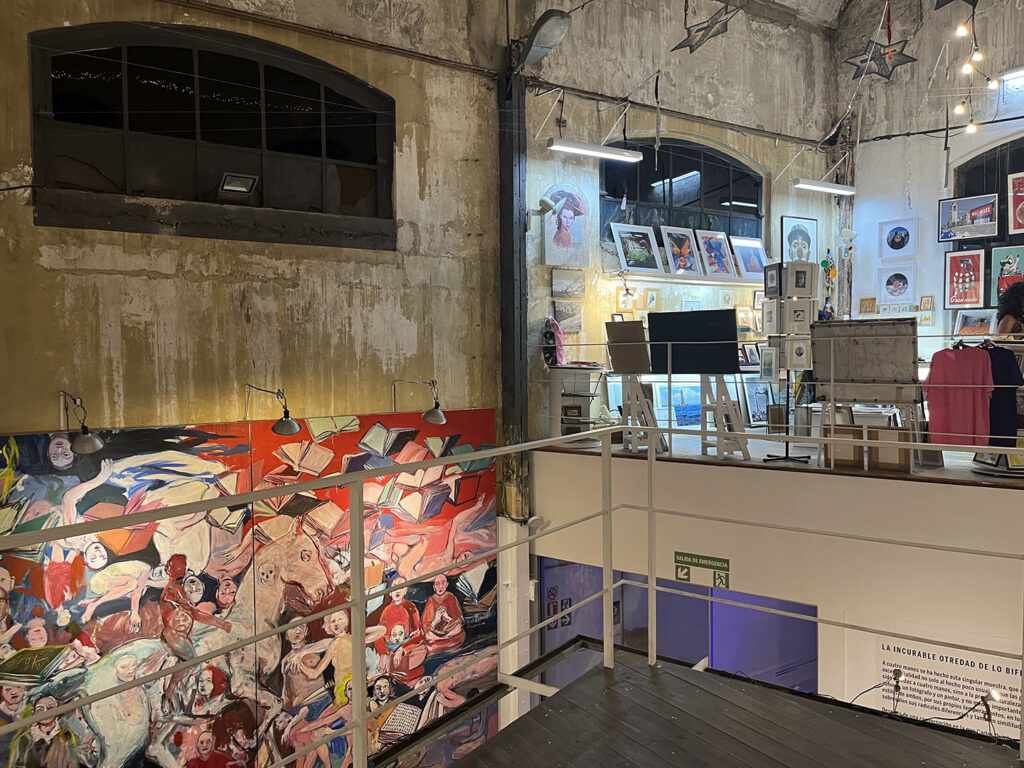
3) We went to Fábrica de Arte Cubano, a very hip former cooking oil plant, now featuring galleries of Cuban art, dancing and music performance areas, a café and bar, and enthusiastic revelers (mostly younger than us and mostly Cuban).
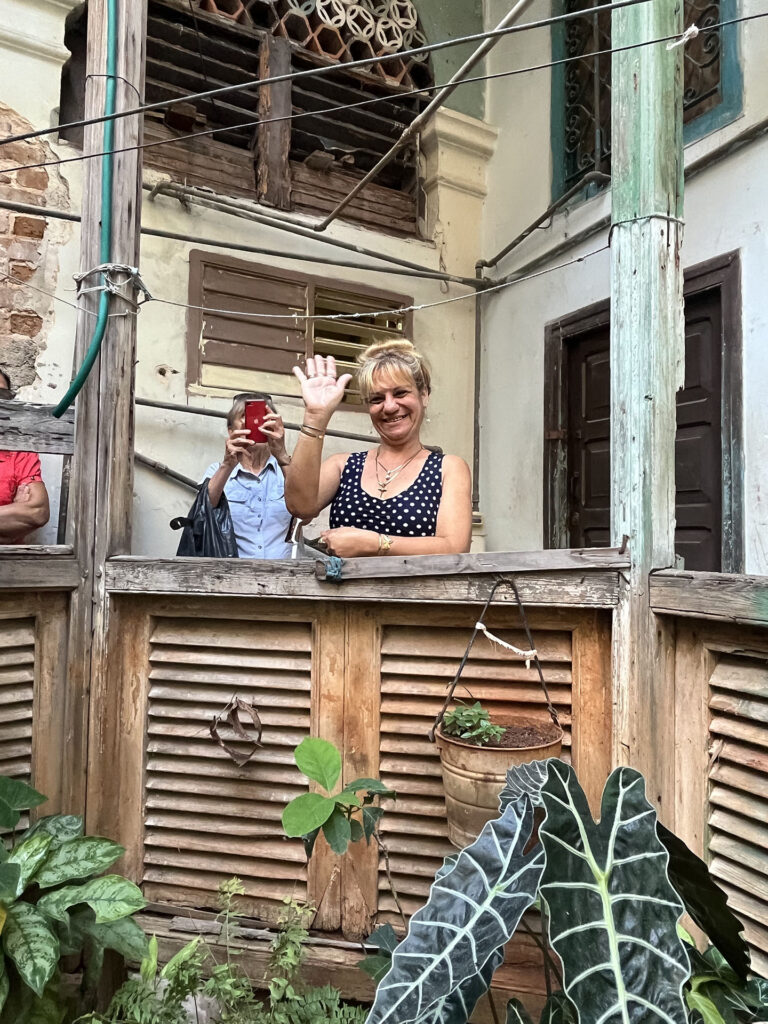
4) We visited a Cuban family in Havana, which helped us to understand the challenges and the joys of life in Havana. My cousin Robin, who was on her first group tour after a lifetime of travel, said that being welcomed by the family was her favorite experience in Cuba. The family we visited could not have been kinder or more welcoming as they plied us with coffee and showed us their homes.
5) We talked to everyone in the streets of Havana (and every other place we visited). I chatted in rudimentary Spanish with garbage men, waiters, ladies working at a museum, an old man in a Cienfuegos park (about his love for Gary Cooper films), students and their parents, and with families at the casas in which we stayed.
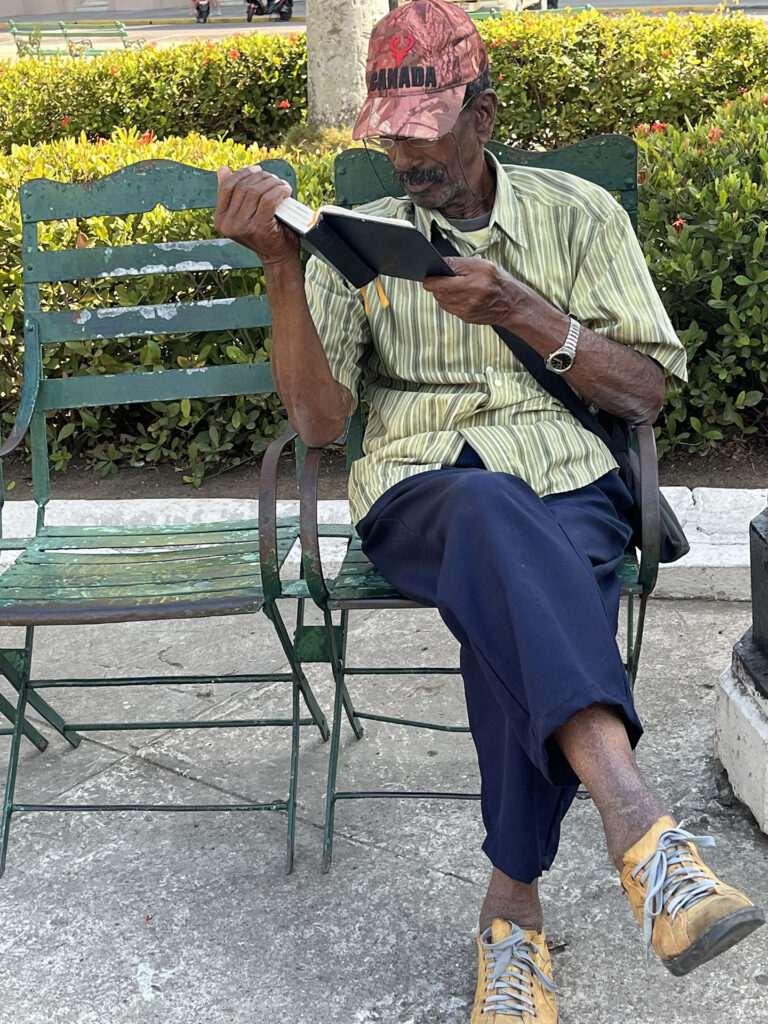
6) We hiked in Viñales to a farm where we were shown how the family made cigars, how they grow coffee, and how they make sugar cane juice. A kind hiking guide helped us maneuver the trails.
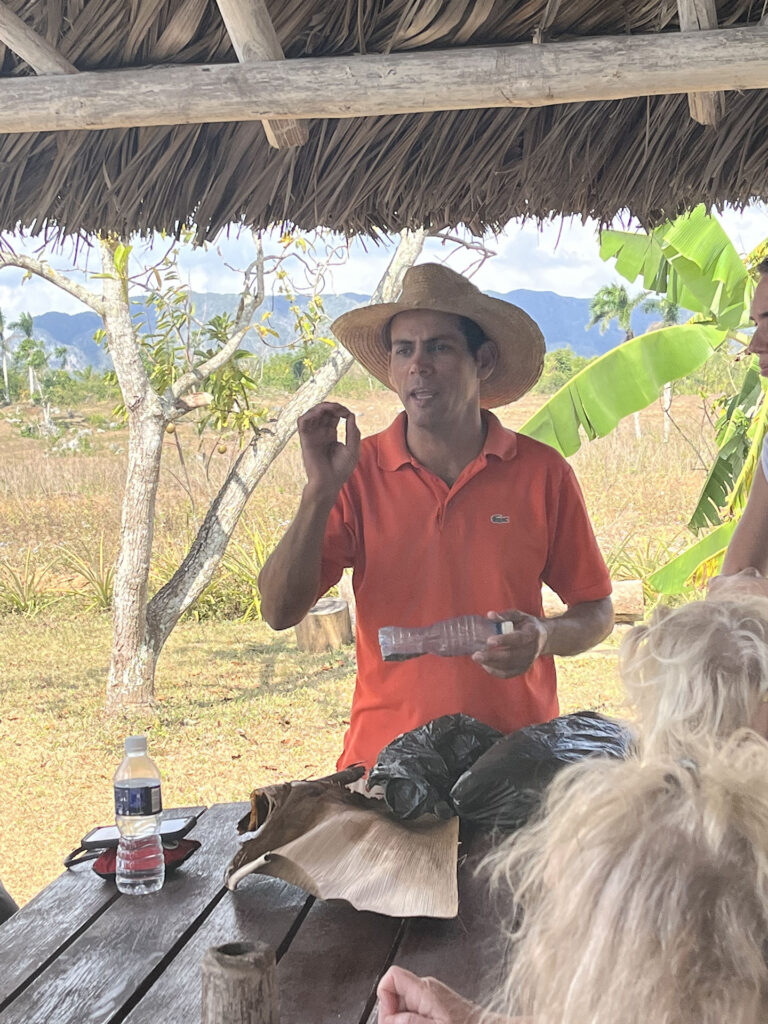
7) We explored an underground stream at the Cueva del Indio near Viñales. After meandering on foot and by boat past stalactites and stalagmites, we received the welcome gift of a perfect piña colada when we emerged.
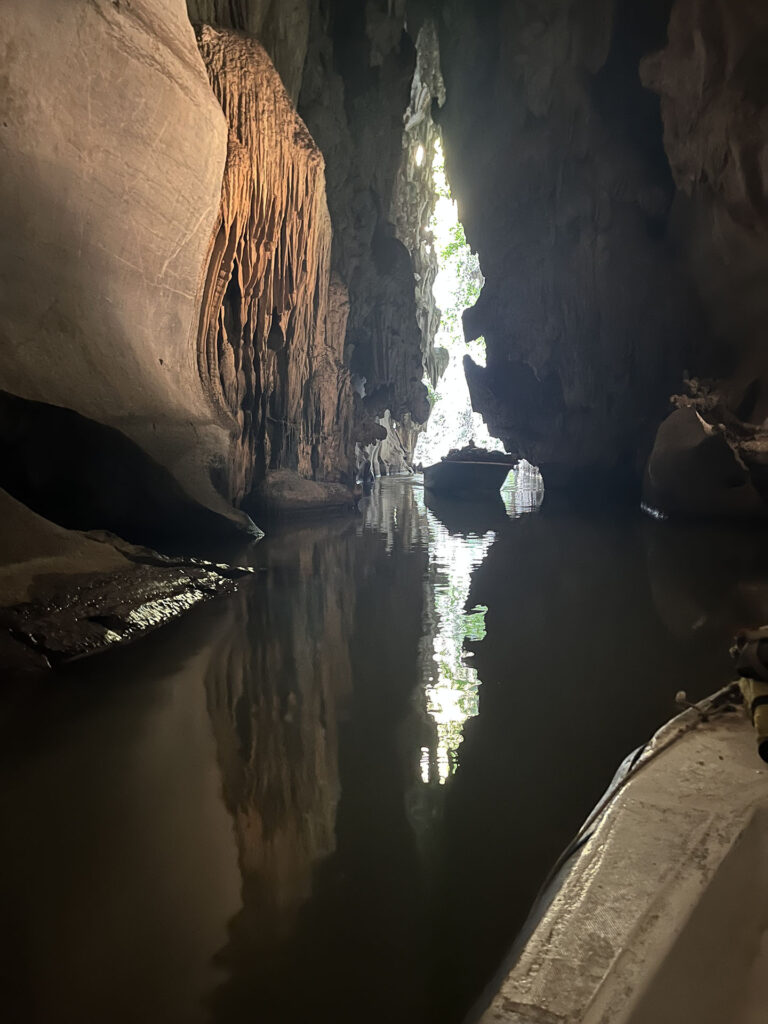
8) I loved doing nothing in Trinidad on the roof of our casa. I had opted out of a visit to a nearby beach in order to listen to the birds, hear music emanating from other houses. There I read (no Internet, thank goodness). I also wandered to a local restaurant to eat fried bananas, rice, and eggs, along with strong, strong coffee. A perfect day.

9) I memorably locked myself in my room (twice) at the beautiful and quiet casa in Viñales, where I also broke a wall socket and a lamp (not to mention the toilet). Our dear and patient hostess and her young daughter made believe that they hadn’t heard me when I reported my list of disasters.
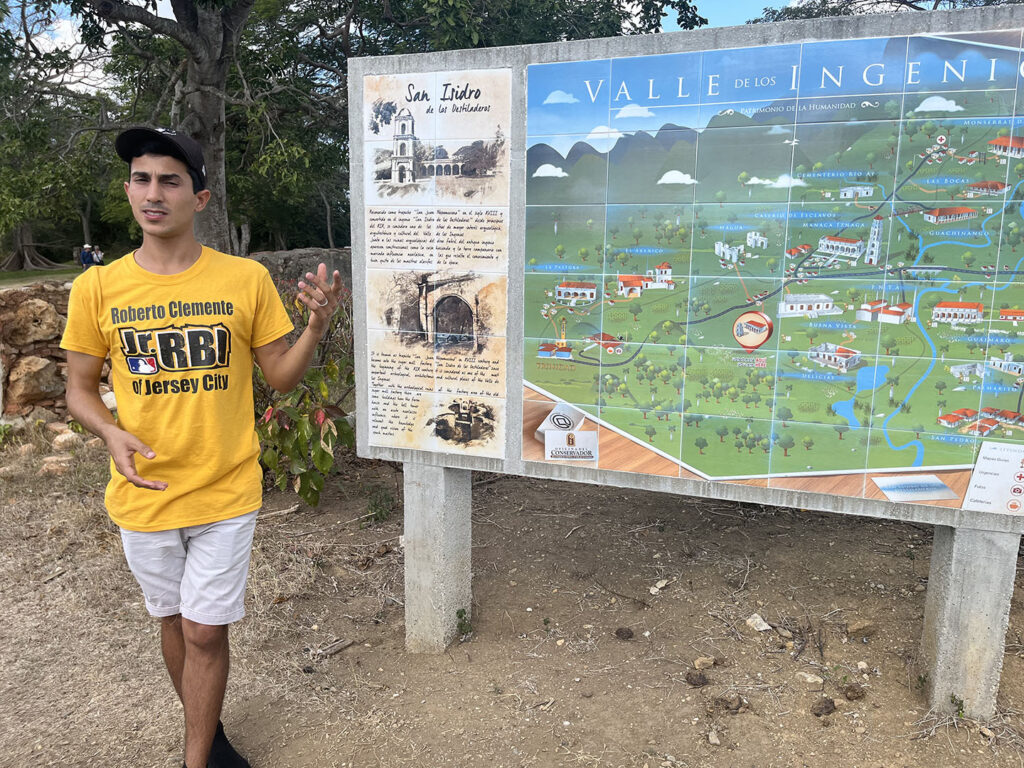
10) We were guided around the Valley de Los Ingenios near Trinidad, one of the largest sugar-producing regions between the 17th and 19th centuries. And we heard about how slaves from Africa withstood horrific conditions while working there.
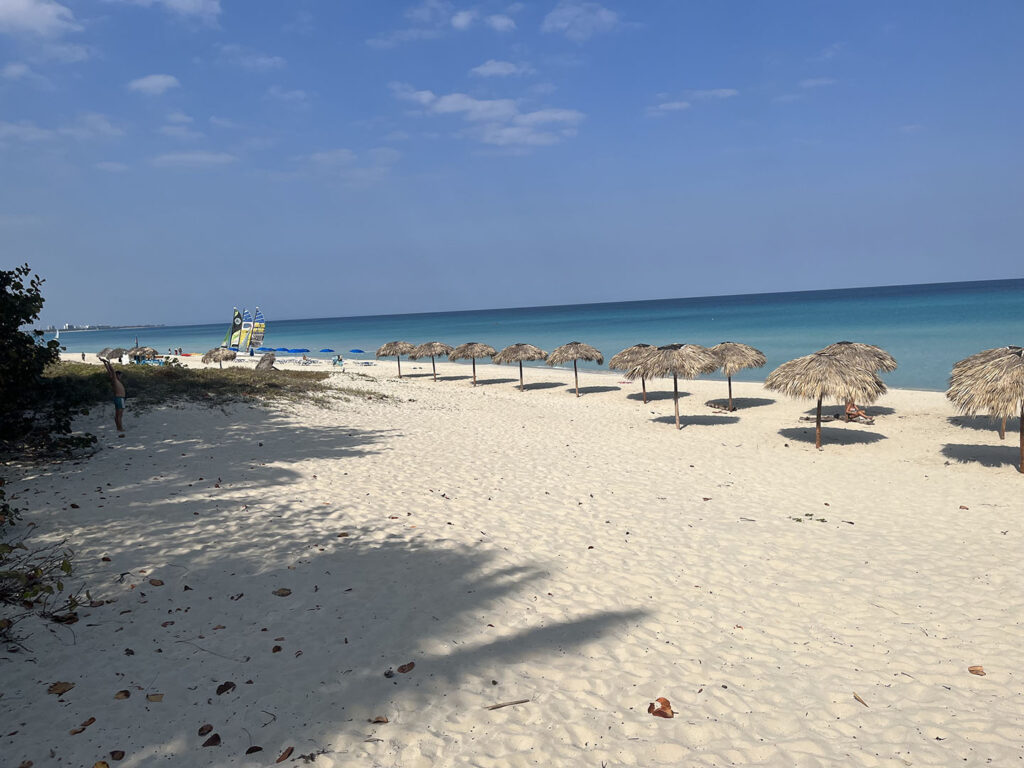
11) We basked in the quiet and lush beauty of the Caribbean at Veradero Beach, now an international resort and mostly for tourists. We stayed at a casa run by a lovely woman whose sons live in Miami.
Talking to Everyone in Cuba
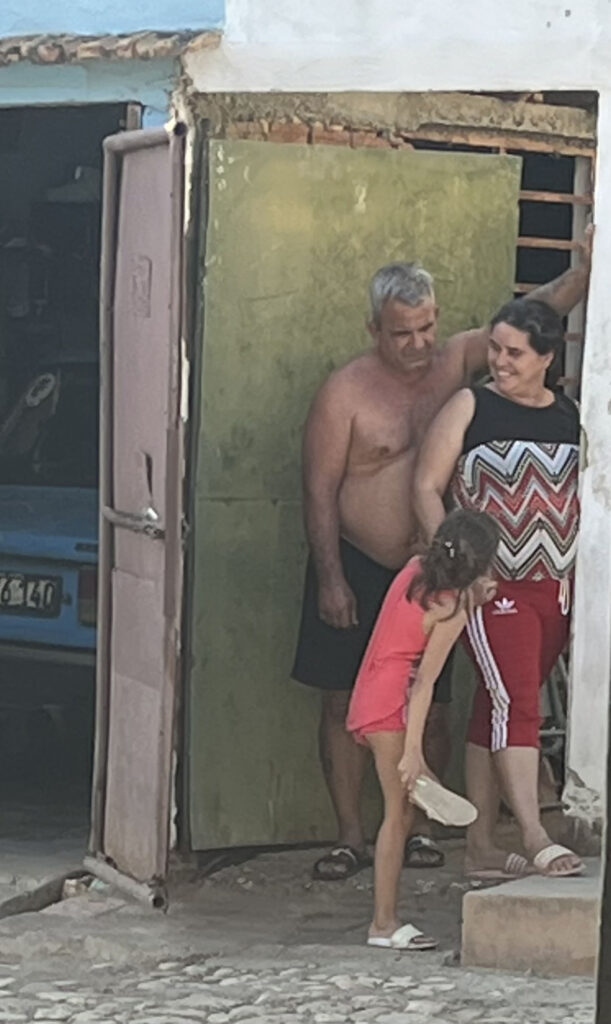
As an older woman I now feel free to talk to everyone on the street. Cubans were always kind and helpful, even when we were not the fastest in navigating stairs, hills, getting on and off transport, and dragging luggage.
We visited educational, historical, and cultural sites in Havana, Viñales, Cienfuegos, Trinidad, and several other places. Along the way we shed our non-prescription drugs, clothes, and school supplies; this was very satisfying because the Cuban people need them.
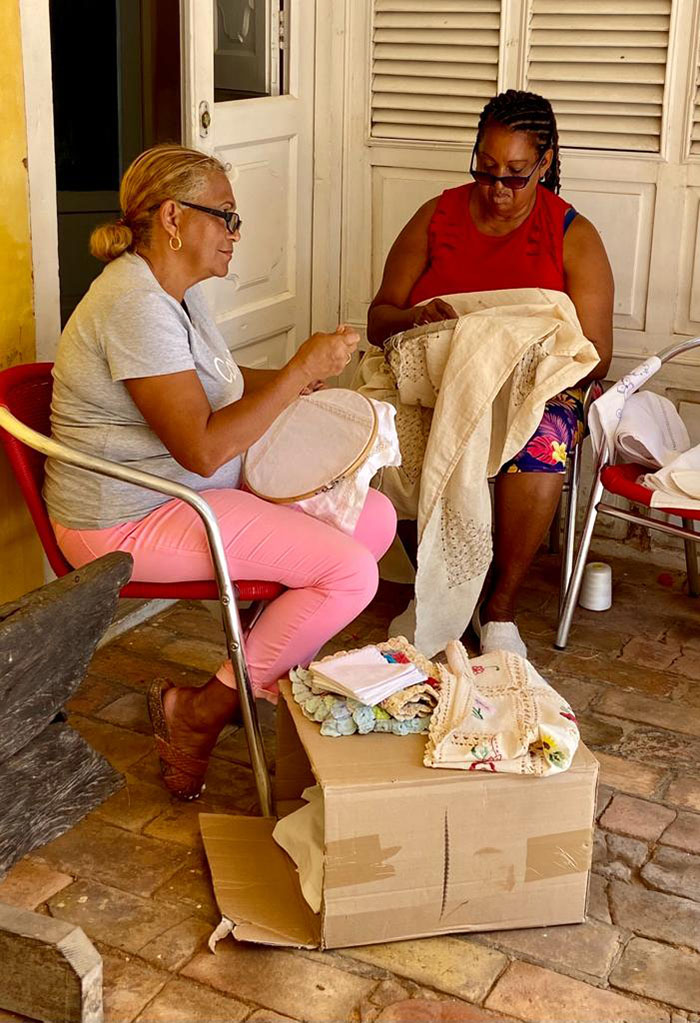
Americans Hug Cubans and Get Hugged Back
In fact, although I have been traveling for more than 50 years, I cannot remember meeting such warm and generous people as those I met in Cuba. Even though they had little, they offered what they had to us. And everyone—from garbage collectors to families on the street to people in restaurants—talked to us and asked us about our lives and shared theirs.

Our Cuban guide told us that Cubans like people from the U.S. I asked her why, knowing the history between our countries. She said, “Because Cubans feel that American are more like us than are Europeans or Canadians or anyone else. They hug, they are emotional. They are like us.”

I, too thought that Cubans were the warmest and happiest people that I have encountered in my travels. Similar situation as yours for sleeping—OMG. The other two ladies stayed in a quiet home with an older woman and her son. Pretty sure mine were drug dealers, but still very nice ! Would go back in a heartbeat —